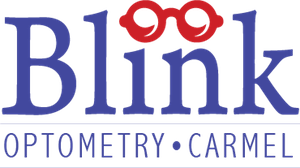Many of us have heard from friends, family and coworkers about the hazards of blue light exposure from our digital devices, but how bad is it?
This is an area of rapidly expanding research which will undoubtedly reveal much more detail over the coming years, but here’s what we know now.
The digital devices rampant in today’s connected lifestyle including computers, tablets and cell phones emit more blue light than we have ever previously been exposed to indoors.
Blue light is the portion of the visible light spectrum that emits the highest energy and is the closest to the harmful Ultraviolet light that causes skin cancer and other complications. Because blue light is the highest energy of the visible spectrum we perceive it as brighter, this explains why High Definition screens use it to make them look brighter and more vibrant and why most luxury car headlights look bright blue.
It has now been conclusively shown that this high energy bright blue light increases eye strain and fatigue with extended digital device use and also affects circadian rhythms which regulate our sleep patterns. This helps explain why looking at screens before bed disrupts our sleep, they trick our brains into thinking that it’s daytime.
Prescription glasses with a blue light filter are very effective at reducing this blue light related eye strain and the resultant sleep disruptions. There are also many non-prescription blue-blocking products available online. However in order to cut costs, many of these filter out the entire blue light spectrum which leads to unattractive yellow tinted lenses, adds a yellow hue when looking at colorful objects and limits the beneficial effects of blue light including increased alertness, concentration and elevated mood. The prescription blue light filtering lenses used in our office selectively filter the most harmful 30-40% of the blue light allowing for reduced digital eye strain and better sleep without compromising the benefits of limited blue light exposure.
In terms of long term eye health related to blue light absorption there is one other essential consideration. Despite the recent increase in artificial blue light in our day to day lives, sunlight is still by far the greatest source of blue light exposure in our world. In fact, 8 hours of staring at a laptop is approximately the same total blue light absorption as 15 minutes outdoors in direct sunlight.
In summary, if you struggle with eye strain, headaches or disrupted sleep patterns from your digital devices then a pair of prescription blue light filtering glasses will help reduce these problems. But if your concern is more directed at maintaining long term eye health then a high quality pair of sunglasses will be far and away the most effective treatment.
By Dr. Trevor Fogg, OD

